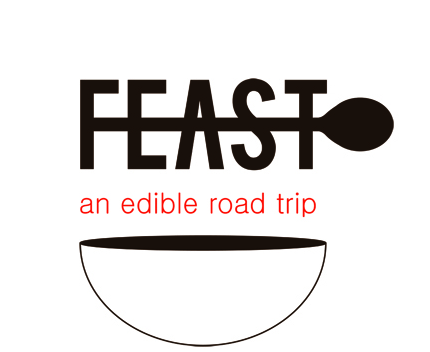Kraut and Schooners
Here is a guarantee: travel along Nova Scotia’s southern shore, and you’ll drive through some of the prettiest towns in Canada.
On our way south to visit Lunenburg, we passed through places likes Mahone Bay, which, as you can see, is pic-tur-ESQUE.
You’ll also come across places like this:
Yes, an old-school sauerkraut factory we spotted on a rural road, and turned the car around to see it. Wonderfully, they were just bringing in the last harvest of cabbages as we arrived, which they grow nearby.
The family that runs it took it over in 1975 from the original owner, 83 year-old Hauey Slauenwhite. He only agreed to sell the place on the condition that the new owners continue on making sauerkraut, and that they use his recipe. We went inside (it was a humid, sulphurous workshop!) and bought a carton of Krispi Kraut. Cost? $1. I then proceeded to carry a carton of very fragrant sauerkraut around in my purse for several days before we gifted it to a friend.
Eventually we made it to the gorgeous town of Lunenburg, a UNESCO heritage site and birthplace of the Bluenose. Not sure what that is? Pull out a Canadian dime and have a look.
Yes, it’s a boat. This famous schooner was built in 1921, and remained undefeated in international racing for 17 years. The original Bluenose, lost in 1946, now exists only on the dime, but a replica – the Bluenose II – is still based in Lunenburg.
The town started out as an Acadian/Mi’kmaq village named Mirligueche, and since has had a long and varied history, including as a shipbuilding centre and port.
After wandering its pretty streets and having lovely lunch at the Salt Shaker Deli, we visited Ironworks Distillery.
They distill their wonderful beverages inside Lunenburg’s old blacksmith shop, which, as you can see, looked as though the blacksmith had packed his tools and left just the day before. The shop, originally owned by the Walter family, was in continuous use as a forge from 1893 to 2005, and was chosen to do the ‘shipsmithing’ for many ships, including both Bluenoses.
So, within this beautiful historic building is Ironworks, founded in 2009 by Pierre Guevremont and Lynne MacKay, who moved from Halifax to pursue their new passion: distilling. Done by hand and in small batches, they make vodka (with local apples), rum, and a variety of drinks that feature Annapolis Valley ingredients such as blueberry liqueur, cranberry liqueur, eau de vie, and apple brandy.
We even tasted an arctic kiwi liqueur, which was a fruit we both tried for the first time at Kingsbrae Gardens in New Brunswick, and again in PEI in the still maturing permaculture orchard at Island Forest Foods.
Like I said, a drive along this stretch of coast will bring you to some incredible places. Some may be planned (a trip to Lunenburg), while others will be delightful surprises, like our Krispi Kraut encounter. We wished we could have gone further! It’s worth it just to pack a few snacks and set out for the day. You really never know what you’ll find.
-LA




